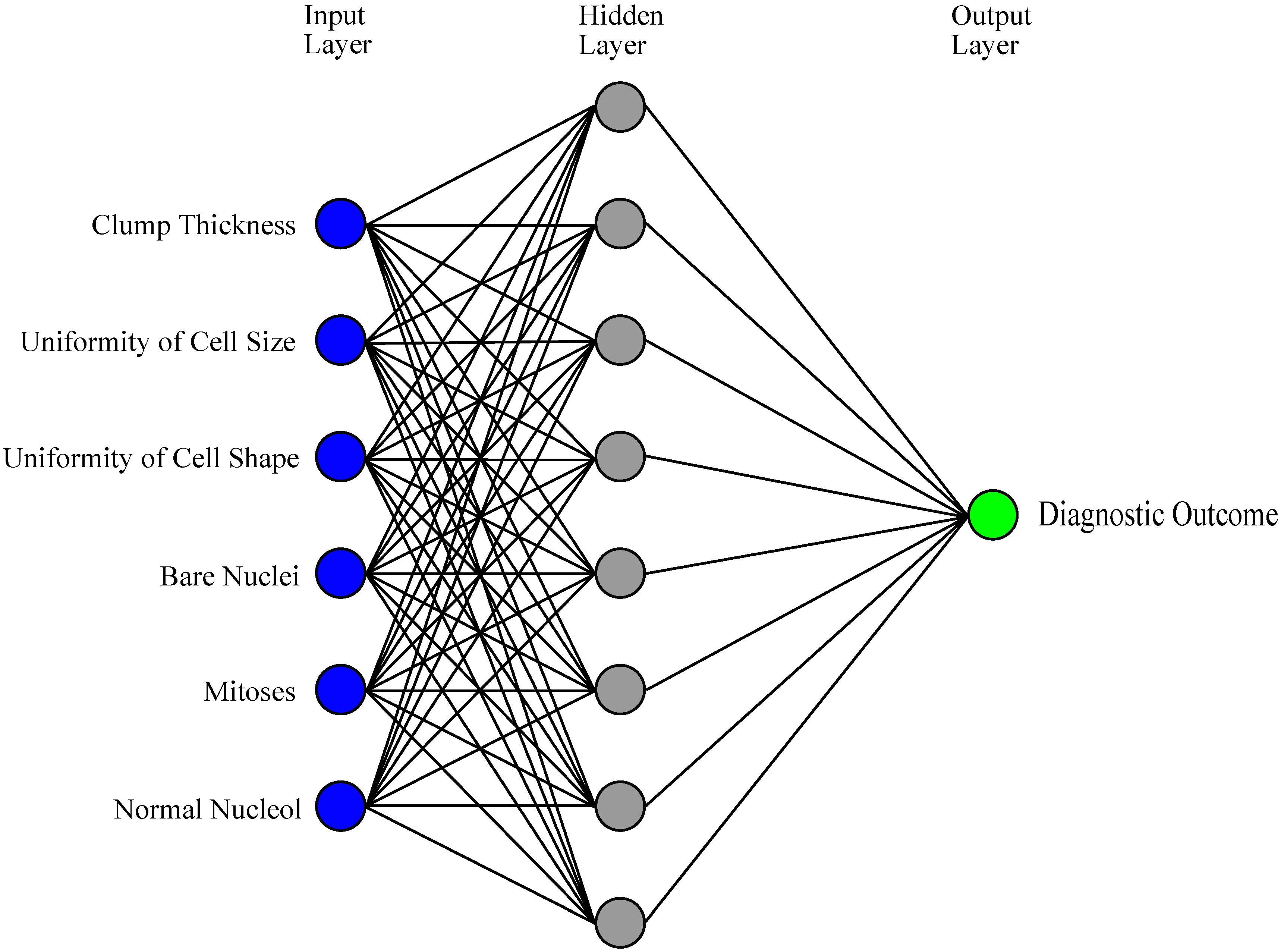The accurate and efficient diagnosis of breast cancer is extremely necessary for recovery and treatment in early stages in IoT healthcare environment. Internet of Things has witnessed the transition in life for the last few years which provides a way to analyze both the real-time data and past data by the emerging role of artificial intelligence and data mining techniques. The current state-of-the-art method does not effectively diagnose the breast cancer in the early stages, and most of the ladies suffered from this dangerous disease.
Thus, the early detection of breast cancer significantly poses a great challenge for medical experts and researchers. To solve the problem of early-stage detection of breast cancer, we proposed machine learning-based diagnostic system which effectively classifies the malignant and benign people in the environment of IoT. In the development of our proposed system, a machine learning classifier support vector machine is used to classify the malignant and benign people. To improve the classification performance of the classification system, we used a recursive feature selection algorithm to select more suitable features from the breast cancer dataset. The training/testing splits method is applied for training and testing of the classifier for the best predictive model.
Additionally, the classifier performance has been checked on by using performance evaluation metrics such as classification, specificity, sensitivity, Matthews’s correlation coefficient, F1-score, and execution time. To test the proposed method, the dataset “Wisconsin Diagnostic Breast Cancer” has been used in this research study. The experimental results demonstrate that the recursive feature selection algorithm selects the best subset of features, and the classifier SVM achieved optimal classification performance on this best subset of features. The SVM kernel linear achieved high classification accuracy (99%), specificity (99%), and sensitivity (98%), and the Matthews’s correlation coefficient is 99%.
Introduction
Breast cancer (BC) is the most critical and common disease which greatly affected ladies in the world according to American Institute for Cancer Research , and there were 2 million new cases in 2018. Breast cancer is the 5th greater cause of women death as compared with other types of cancers. The breast cancer cells are growing abnormally in breast cancer tissues and gradually increased the affected cell rate, causing breast cancer.
The breast cancer is actually a malignant tumor that is developed in breast cells. A group of splitting cells forms a lump or mass of extra tissue which are called tumors, and these tumors can be either cancerous (malignant) or noncancerous (benign). In different countries with advanced technology in medical science, the 5-year survival rate of initial phase breast cancer is 80–90% and drops to 24% for breast cancer diagnosis at the initial stage. For diagnosis, the breast cancer various invoice-based techniques have been used. In the biopsy technique breast tissues are collected for testing and the results are highly accurate. However, to take a biopsy from the breast is painful for the patient. Another breast cancer diagnosis technique is mammogram which is used for the diagnosis of breast cancer. In this technique, a 2-dimensional (2D) projection image of the breast is designed.
However, the mammogram technique does not perform the diagnosis of benign cancer effectively. Another invoice-based technique for the diagnosis of the breast is magnetic reasoning imaging (MRI), which is a very complex test and provides excellent results for 3-dimensional (3D) images and displays the dynamic functionality.

In India and over the world, Cancer has become a deadly disease and more and more people are suffering from Cancer and a survey says one in every 30 women suffer from this disease in their lifetime and so basically the project was first thought of because of the increase in cases of breast cancer and one thing which is very important that if we can detect the Cancer at an early stage then there is an increased chances of it getting cured. So this project lays a foundation in making the detection of the cancer automated so that more and more people can get it diagnosed early so as get cured.
ADVANTAGES
- Quality improvement
- no noise
- no data loss
- high accuracy
APPLICATIONS
- Bio-medical
- Medical Imaging

.svg)
